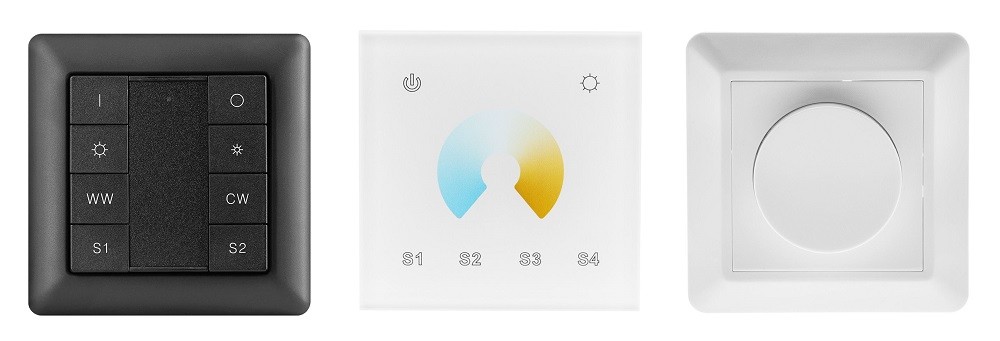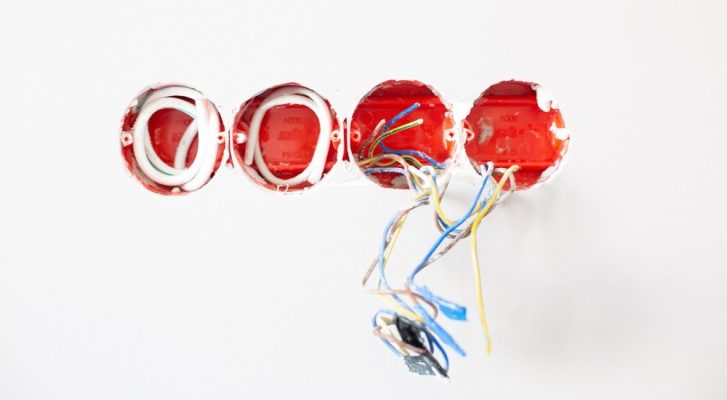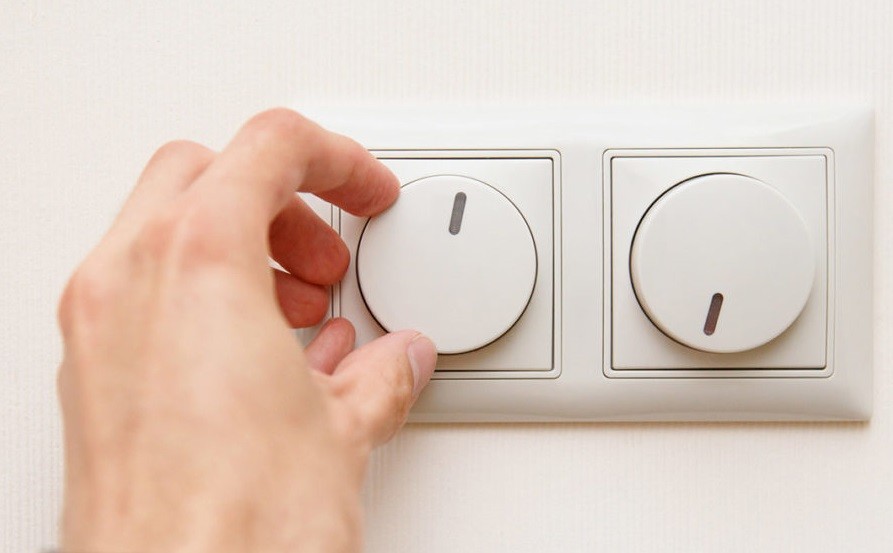[vc_row][vc_column][vc_column_text]Want to upgrade your home lighting and take advantage of the energy-saving benefits of LED lighting? Led dimming helps you save electricity! Whether you want to create a moody atmosphere in your living room or just save on your energy bills, you should consider investing in an LED dimming system. In this article we will look at the different systems. We will discuss the different types of LED dimming systems, the benefits of using LED dimming and tips for finding the best LED dimming system for your needs. Read more!
What is LED dimming?
LED dimming has become an increasingly popular lighting solution for homes and businesses. It provides energy-efficient lighting that can be tailored to your needs. LED dimming allows you to adjust the brightness of the lights to create the perfect atmosphere in any room. It can also help reduce energy costs by allowing you to control the amount of light used in a given space. LED dimming allows you to enjoy the benefits of a well-lit environment without the need to over-illuminate the area. LED dimming is an affordable and efficient way to enjoy the beauty of natural lighting in your home or office.
Led dimming and its advantages in brief
Led dimming is a great way to save energy and money while improving the appearance of your home. LED dimming offers several benefits, such as reducing energy consumption, increasing the longevity of LED lights and creating a pleasant atmosphere in the home or office. Led dimming allows you to adjust the brightness of the lights according to your needs and preferences. This can help you save money on your energy bills and create a more comfortable and inviting atmosphere. LED dimming also reduces eye strain by eliminating the need for harsh lighting. In addition, LED dimming enhances the look of any room and gives a modern and stylish look. So if you’re looking for a way to save money, improve the look of your home and create a cosy atmosphere, LED dimming is worth considering.
What to consider when choosing an LED dimming system?
When considering which LED dimming system to choose for your lighting needs, it’s important to consider a few key factors. First, you need to determine which type of LED dimming system is best suited to your application; there are many different types on the market today, including 0-10V dimming, Phase-cut (TRIAC) and DALI dimming. Secondly, the cost of the LED dimming system and its compatibility with existing systems must be taken into account. Finally, you want to make sure that the LED dimming system you choose is energy efficient and will help you save on lighting costs. By taking all these factors into account, you can ensure that you choose the right LED dimming system for your commercial or residential needs.
Digital dimming is the most advanced type of LED dimming, and offers the most control, allowing you to adjust the brightness (and colour temperature!) of your LED lights more precisely. When choosing a LED dimming system, it is important to consider the size and layout of the room, the type of LED lighting you are using and the level of control you want. With the right LED dimming system, you can create the perfect lighting atmosphere for any occasion.

Zigbee, PWM, TRIAC
Types of LED dimming systems
LED dimming systems are an important part of modern lighting solutions. LED dimming technologies can help reduce energy costs and extend the lifetime of LED lighting products. LED dimming systems are available in several types, including 0-10V, DALI, 1-10V, TRIAC and pulse width modulation (PWM). Each type of LED dimming system has unique advantages, making them ideal for different applications. 0-10V dimming systems are a popular choice for commercial and industrial installations, offering smooth dimming performance and a wide range of dimming levels.
DALI dimming systems allow precise control of dimming levels and can be used in both indoor and outdoor lighting solutions. 1-10V dimming systems are suitable for spaces where frequent dimming is required and offer good energy savings.
TRIAC dimming systems are well suited for home applications and offer a more cost-effective dimming solution. PWM (Pulse Width Modulation) dimming systems offer a highly efficient dimming solution with low power consumption and are ideal for areas with low ambient light levels. With so many LED dimming systems available, businesses and homeowners can find the perfect dimming solution for their LED lighting needs.
Power and voltage
In Led lighting, dimming is a great way to adapt the look and feel of a space. LED dimming is the process of reducing the power and voltage of lights, allowing you to control the brightness and mood of a room. There are three main types of LED dimming: phase-differential dimming, digital dimming and 0-10V dimming. Triac is the oldest and most common type of dimming, while digital dimming and 0-10V dimming are newer technologies that offer a more precise and efficient way to control the brightness of lights. All of these LED dimming methods can be used in a variety of environments, from residential to commercial, and allow you to customise the lighting in your space. With the right dimming system, you can achieve the perfect lighting for any occasion.
Compatibility with existing wiring
In recent years, LED lighting has become increasingly popular due to its energy efficiency and long lifetime. Now that dimming technology has advanced, these lights can be dimmed in many different ways. The most common type of LED dimming is Triac and DALI.
Triac dimming uses a power splitting technique to reduce the amount of power sent to the LED driver.
DALI dimming uses a two-way digital communication system to control dimming and requires two additional wires for communication. So make sure you have enough existing wires that can be used to create a custom lighting environment. With these dimming techniques, it is possible to save energy and create the perfect atmosphere in any space.
Then there are RF and Zigbee wireless systems. They do not need wires to control old or new lights. These systems use battery-operated buttons to control the lights. They can therefore be retrofitted to any system.

Led dimming system cost
Led dimming is an energy-efficient lighting solution that can help reduce costs and improve the look and feel of any space. With a range of dimming types available, including 0-10V dimming, TRIAC dimming and PWM (Pulse Width Modulation) dimming, finding the right solution for any application is easy.
TRIAC dimming is the most common type of dimming used in indoor and outdoor applications because it can handle higher wattages and is highly reliable. Pulse-width modulation dimming is the most advanced type of dimming, as it provides accurate dimming and can handle wide power ranges. Whatever type of LED dimming you choose, it can be a cost-effective way to reduce energy costs.
LED lamps are more energy efficient than traditional incandescent lamps, and dimming them further increases their efficiency. Led dimming can also reduce the need for additional lighting in your space, saving you additional costs. In addition, LED dimming can prolong the life of an LED lamp, as dimming the lamp can help prolong the life of the lamp. If you are looking for a cost-effective solution to reduce energy costs, look no further than LED dimming. There are several different types of dimming available, so you can find the perfect solution for any application. So if you want to save money and reduce energy costs, consider LED dimming today!
Installation considerations
It’s no secret that LED dimming is an increasingly popular way to save energy in homes and businesses. LED dimming is available in a wide range of colours. Regardless of the type of LED dimming you choose, it is important to consider the installation details to ensure that your LED dimming system works correctly and safely. Make sure you take into account the voltage requirements, wiring diagram and LED dimming compatibility with the luminaires before starting the installation. With the right research and planning, you can ensure that your LED dimming system is installed correctly and works optimally.
Professional installation
For professional installation, it is important to consider the different types of LED dimming. Traditional LED dimmers require a preset minimum voltage, while digital dimmers allow precise control of light output. when installing LED dimming systems such as TRIAC LED dimming, it is best to use qualified electricians who understand the specifics of LED dimming and know how to install the system correctly. Professional installation can also help ensure the longevity of your LED dimming system and ensure that you get the most out of your LED dimming system.
Installation do-it-yourself
There are a few installation considerations to take into account if you want to do the process yourself. Led dimming is divided into two main types: TRIAC dimming and digital dimming. TRIAC dimming is the most common type of LED dimming, and requires a special dimmer that is compatible with the LED lights you use and is powered by mains.
Digital dimming is the latest type of LED dimming and requires a digital dimmer and compatible LED lights. Digital dimmers, such as Zigbee or RF, can usually be installed by anyone, as they can be mounted between the LED controller and the LED light.
When it comes to DIY installation of LED dimming, it’s important to make sure you understand what type of dimming your lights require and that you have the right dimmers selected. It is also important to pay attention to the power and voltage ratings of the dimmer and the power ratings of the LED lights to avoid overloading the system.
If you don’t know what you’re doing, always ask a professional for help.
TRIAC LED dimming checklist
- Not all LED lamps are dimmable – check the packaging/product label before buying.
- Buy dimmable LED luminaires from well-known brands – they are likely to be tested and compatible with a wider range of dimmers.
- There are two types of mains dimmers in your home: leading edge and trailing edge – trailing edge dimmers work best with LEDs.
- If your dimmer switch is old, it’s probably a Leading edge – it’s worth replacing with a Trailing edge.
- Check that the minimum and maximum loads of the switch match the number of lamps in the circuit and the total power.
- Test both the bulbs and the dimmer switch before you buy to make sure the combination will work.

Tips for choosing the right LED dimming system for your home
LED dimming is a great way to customise the lighting in your home. Whether you’re looking for adjustable brightness or colour, LED dimming can give you the control you need. When choosing the right LED dimming system for your home, there are a few things to consider.
First decide what type of LED dimmer you need: digital, analogue or PWM.
Digital dimming is usually used with RGB and CCT LEDs and is the most accurate, while analogue dimming is the most cost-effective and is usually used with monochrome LEDs. PWM dimming is also popular because it can be used with both monochrome and RGB LEDs.
The next thing to consider is the dimming range and compatibility of the dimmer switch you choose. Make sure that the switch is compatible with the dimmable LED bulbs you plan to use and that it has the dimming range you need. Finally, consider the installation needs of your chosen system.
Make sure it is easy to install, and remember to follow all safety protocols when installing LED dimming systems. By keeping these tips in mind, you can be sure to find the right LED dimming system for your home.
Pros and cons of Led dimming technologies
Led dimming technology offers many advantages over traditional lighting options, including better energy efficiency, longer bulb life and better control of illuminance. However, there are also some potential drawbacks to consider when choosing an LED dimming system.

Led dimming – advantages
Lower energy costs.
LED lights consume much less energy than traditional forms of lighting, and when used with a dimmer switch, they can help you save even more money. dimming LED lights reduces their power consumption, leading to lower electricity bills.
Extends the lifetime
In addition, dimming LED lights can extend their lifetime, meaning fewer bulbs need to be replaced over time.
Improved lighting quality
The main benefit of LED dimming technology is an improvement in lighting quality. By adjusting the light output, LED dimming allows users to create the exact atmosphere they want in their space.
Reduced glare
By lowering the intensity of the light, you can significantly reduce glare and help save your eyes.
In summary, LED dimming technology offers several advantages for users looking for better lighting quality and cost savings. By considering all the options available, users can choose the best LED dimming technology for their needs. LED dimming technology can provide exactly the lighting environment you need.
Led dimming – disadvantages
Compatibility issues
Different types of dimming, such as 0-10V dimming, phase-difference dimming and digital control dimming, may not be compatible with each other, so you may need to purchase additional components to make them work together.
One of the main drawbacks of LED dimming is the potential for flicker and hum. Some dimming systems cause flickering, humming or buzzing when the light intensity is adjusted. This is because some dimming technologies are not compatible with all types of LED lighting systems. In addition, some dimming systems cannot dim low enough to provide mood lighting.
High installation costs
One of the biggest drawbacks is the cost of installation. This is because LED dimming systems require special wiring, high-quality components and often additional control systems to be installed. This makes LED dimming an expensive investment that may not be suitable for all projects. Ultimately, the decision to use LED dimming should be based on the specific needs of the project, the budget and the type of dimming system best suited to the application.
Expensive spare parts
One of the drawbacks of LED dimming is that it can be expensive to replace parts. Many LED luminaires have a controller or control module that can fail or break, and replacing these parts can cost a considerable amount of money.
In addition, if the LED light is not compatible with the dimmer, the user may have to buy a new LED light to use the dimmer.
Maintenance
LED dimming systems require regular maintenance and calibration to ensure optimum performance. This may involve replacing components, adjusting settings and making repairs. As a result, some LED dimming systems can take time and effort to maintain.
Summary of the advantages and disadvantages of LED dimming
In summary, LED dimming technologies offer many advantages, but these must be weighed against the associated costs and potential drawbacks. Before deciding to continue with an LED dimming system, it is important to consider the pros and cons of different LED dimming technologies and the requirements and needs of your application. This will ensure that you choose the best LED dimming system for your needs.
List of different types of LED dimming
We have written a list of dimming techniques, plus an in-depth article on each of them, which you can access via the links:
- Triac dimmer
- 0-10V dimmer
- Pulse Width Modulation (PWM) dimmer.
- DALI (Digital Addressable Lighting Interface) dimmer.
- Radio Frequency (RF) dimmer
- Zigbee dimmer
Tips for choosing the right LED dimming technology
When choosing the right LED dimming technology, it is important to consider your specific needs and budget before making a decision. If you don’t have the expertise or budget to install digital control dimming, TRIAC dimming may be a better option.
It is also important to ensure that the LED dimming technology you choose is compatible with existing components and dimmer switches, as compatibility issues can cause significant problems.
In summary, LED dimming technologies offer many advantages, including improved energy efficiency and cost savings. However, it is important to consider the pros and cons of each technique before making a decision. By taking the time to assess your needs and budget, you can ensure that you choose the right LED dimming technology for your situation.
[/vc_column_text][/vc_column][/vc_row][vc_row][vc_column][vc_column_text]
Frequently asked questions about LED dimming
[/vc_column_text][vc_toggle title=”Can LED lights be dimmed?”]Yes, LED lights can be dimmed. [/vc_toggle][vc_toggle title=”What is an LED dimmer?”]An LED dimmer is a device that controls the brightness of LED lights.[/vc_toggle][vc_toggle title=”Is a Led bulb dimmable?”]Most LED bulbs can be dimmed, but always check the product information before buying. [/vc_toggle][vc_toggle title=”Are all LED strips Dimmable?”]Not all LED strips are designed to be dimmable, so always check the product information here too.[/vc_toggle][/vc_column][/vc_row][vc_row][vc_column][vc_column_text]
Led dimming specialist
LedStore has been an expert in LED lighting and lighting design since 2010. We have our own product design, so our products are technically state-of-the-art. Products have quarantee for up to 7 years. We also carry out lighting maintenance.
We focus on temperature-controlled and high colour rendering lights, so they work brilliantly and last a long time. We make around. 500 lighting designs for our clients’ sites. Read more here or order a lighting design
We offer a service of custom-made LED strips, i.e. custom-made LED strips in aluminium profile. Also installed. Did you know? LedStore offers lighting design from 99 euros for the whole house!
Remember that we are always available to support you along the way, by email(myynti@ledstore.fi) and by phone (045 251 4510). As always, feel free to share photos of your own projects on social media at #ledstorefi IG and ledstore.fi FB. We love to see the cool things our LEDs do, and it helps to provide inspiration for those who are not sure about the power and awesomeness of LEDs. Did you know that we already have over 3500 pictures of our LED installations in our Gallery!
Photo gallery of Led lights:
Product gallery: pictures of products in different installation locations
Indirect light: indirect light in different spaces
Room-specific: Light in different rooms
References: complete houses that have been photographed[/vc_column_text][/vc_column][/vc_row]

